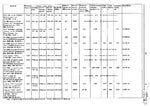windhund116
Senior Airman
- 360
- Jul 3, 2017
66 Pages of still trying to turn a sow's ear into a silk purse.
Lots of coulda' shoulda' woulda' mumbo jumbo about trying to turn a mediocre low altitude fighter into a world beater.
Isn't all of this more of a mental exercise than a reflection of history?

